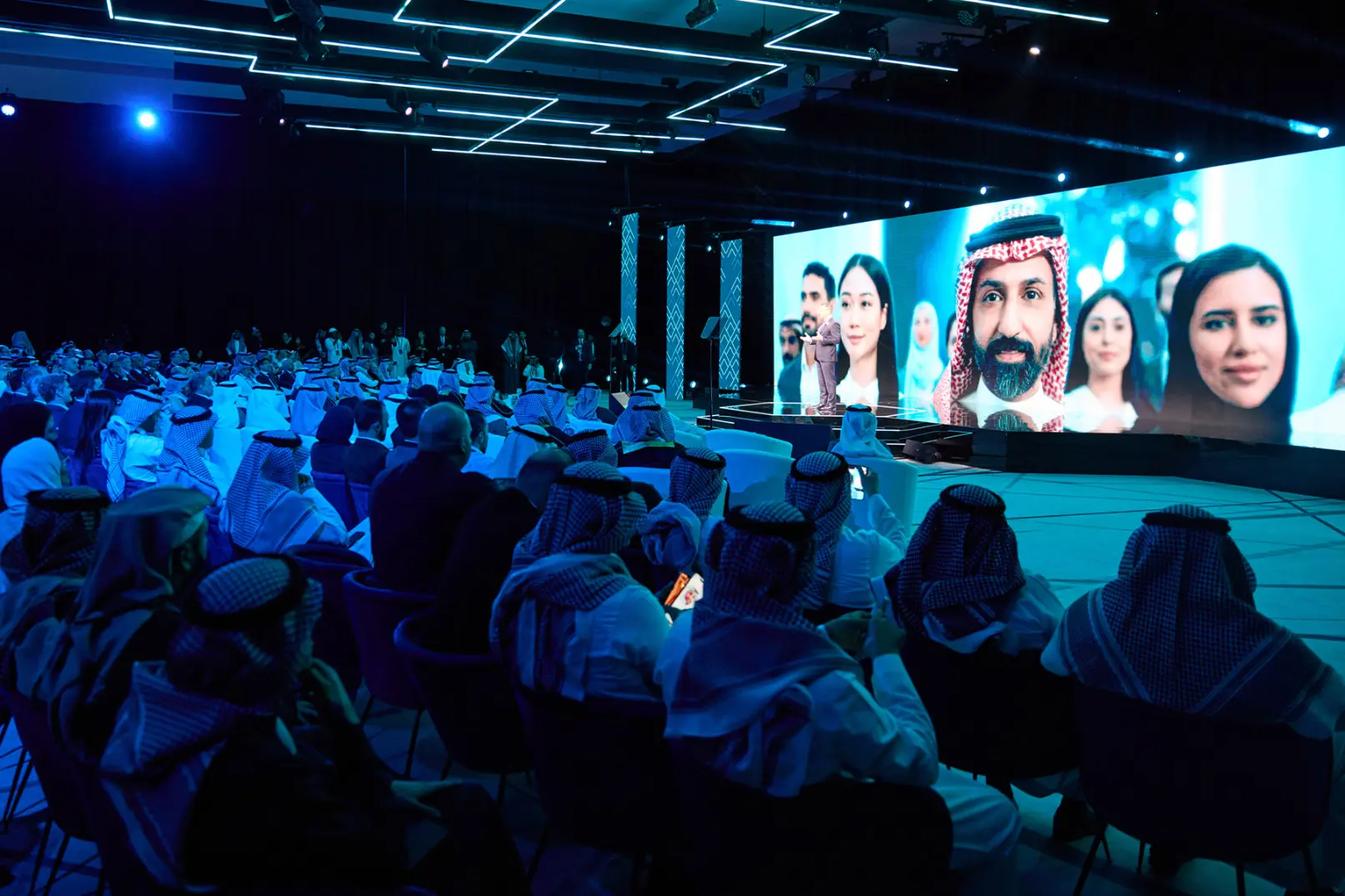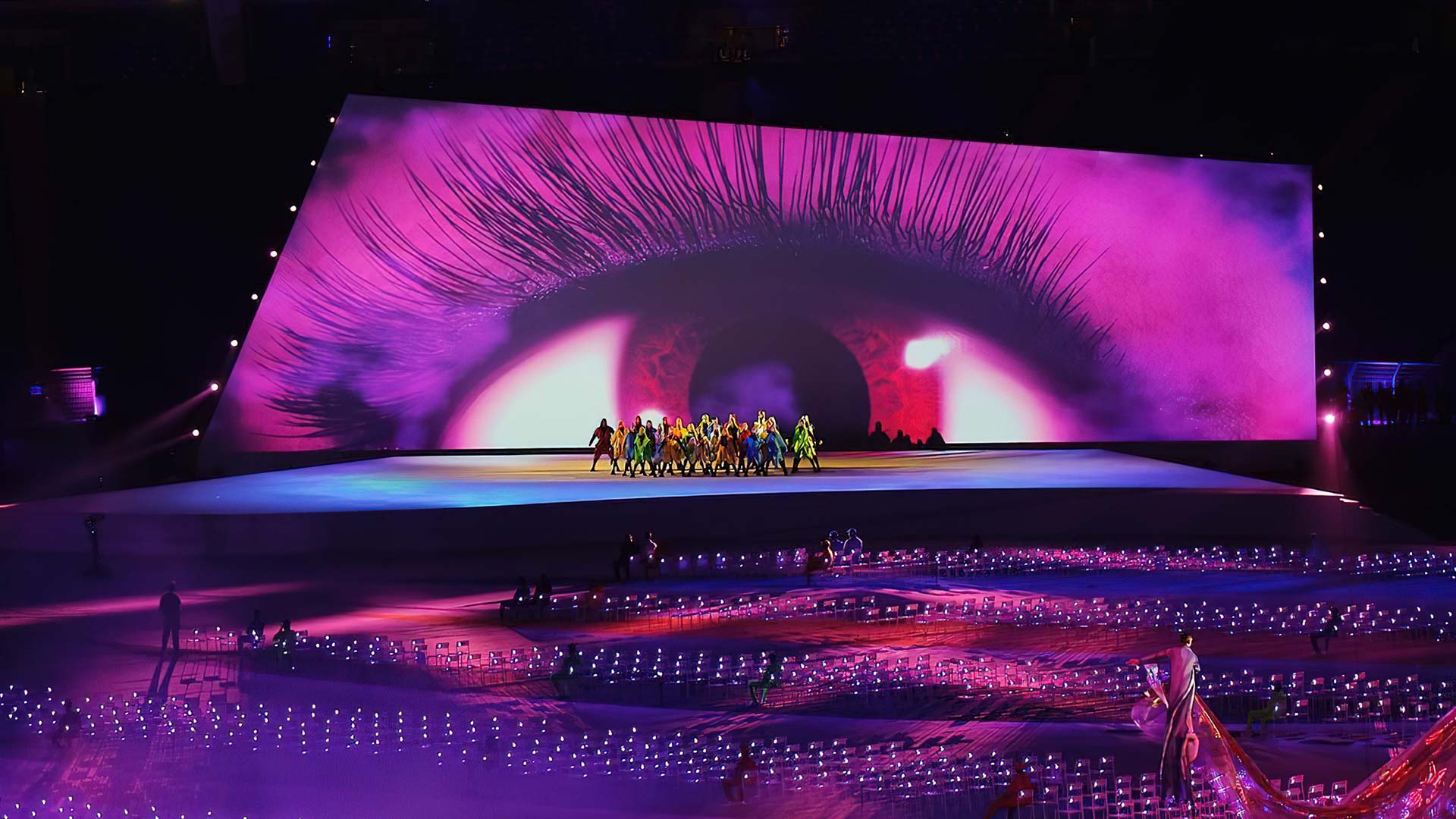Mondadori store – Immersive room

Mondadori Store
Immersive Room
Agenzia: Fandango Club
With the opening of the new Mondadori Duomo bookstore in Milan, an area for younger children was also created: We are Junior. The concept was to create a cultural hub between innovation and tradition dedicated to all book lovers.
Arriving in the basement level is the area for juniors conceived with wooden trees, reading platforms, soft seats carved into the bookcases, inviting an enveloping and effective book discovery experience.
Once inside, guests will feel projected inside a story, in an immersive, soft and welcoming environment.
To complete the area, the client commissioned the agency to create an immersive cylinder, the Immersive Room that can offer children and young people a space to interact with fantastic worlds through resident screens.
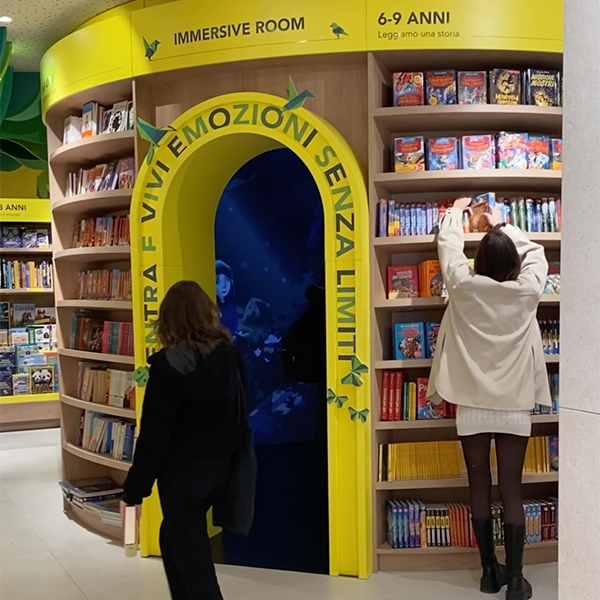
Idea
From the very first moment, the project fascinated and excited us, and together with the agency, we decided to elaborate further on the initial request. Thus, we transformed the room into a 360-degree projection cylinder and completed the path to immersiveness by adding physical interaction elements that would allow the user to be directly involved in the adventure.
Through an app, on a double book-shaped tablet, the user can choose between different characters and scenarios, mixing them to immerse and experience adventures in many different worlds.
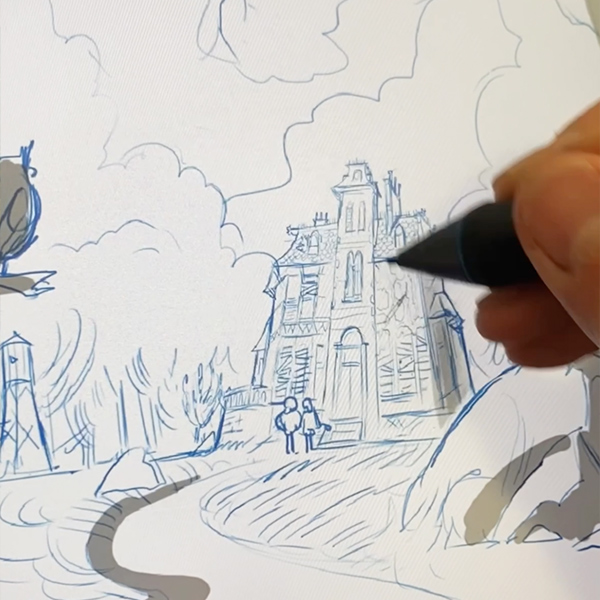
Work
The development required several steps.
The first was to engage a consultant, an expert in children’s literature, to identify the worlds given to the target audience required by the client. Next, a selection of illustrators, penciled the characters and worlds in which to set the experiences. Once these steps were approved, we proceeded with the animations, soundtracking, and copywriting.
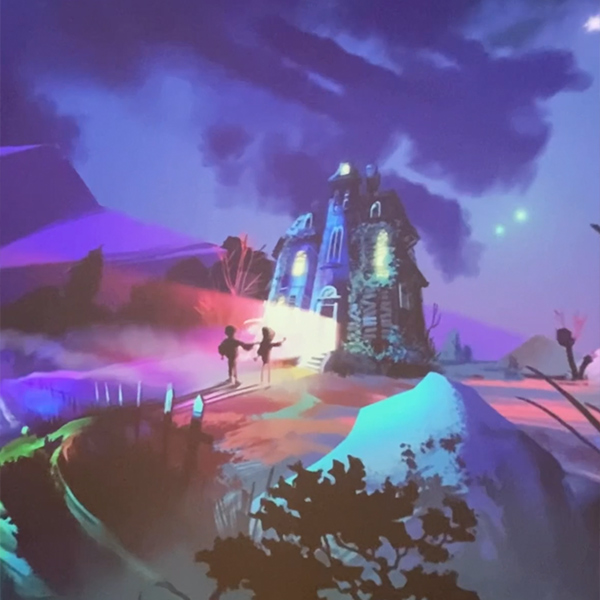
One of the main challenges of the production process was to find a tool that would allow us to present the progress steps in a manner similar to the final user experience.
The store was completed very few weeks before the opening, if we had carried out the process of presenting advancements only through conventional screens, the judgment on the size of the displayed elements, the speed of the animations, and the perception in general, would have been distorted.
For this reason, we decided to reconstruct in unreal engine the cylinder and made an application for Meta Quest 2.
The handiness of the hardware allowed us to periodically immerse the client, through appointments at their site, inside the cylinder still under construction. In doing so, we anticipated the decision-making process, allowing us to focus (when the cylinder was built) on only small details.
Idea
From the very first moment, the project fascinated and excited us, and together with the agency, we decided to elaborate further on the initial request. Thus, we transformed the room into a 360-degree projection cylinder and completed the path to immersiveness by adding physical interaction elements that would allow the user to be directly involved in the adventure.
Through an app, on a double book-shaped tablet, the user can choose between different characters and scenarios, mixing them to immerse and experience adventures in many different worlds.

Work
The development required several steps.
The first was to engage a consultant, an expert in children’s literature, to identify the worlds given to the target audience required by the client. Next, a selection of illustrators, penciled the characters and worlds in which to set the experiences. Once these steps were approved, we proceeded with the animations, soundtracking, and copywriting.

One of the main challenges of the production process was to find a tool that would allow us to present the progress steps in a manner similar to the final user experience.
The store was completed very few weeks before the opening, if we had carried out the process of presenting advancements only through conventional screens, the judgment on the size of the displayed elements, the speed of the animations, and the perception in general, would have been distorted.
For this reason, we decided to reconstruct in unreal engine the cylinder and made an application for Meta Quest 2.
The handiness of the hardware allowed us to periodically immerse the client, through appointments at their site, inside the cylinder still under construction. In doing so, we anticipated the decision-making process, allowing us to focus (when the cylinder was built) on only small details.

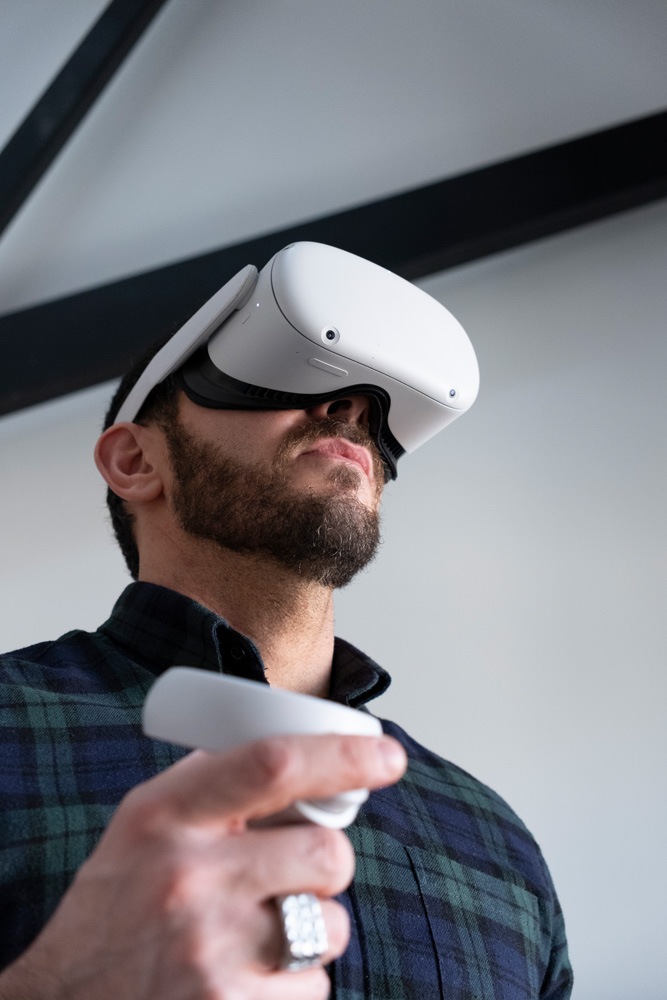
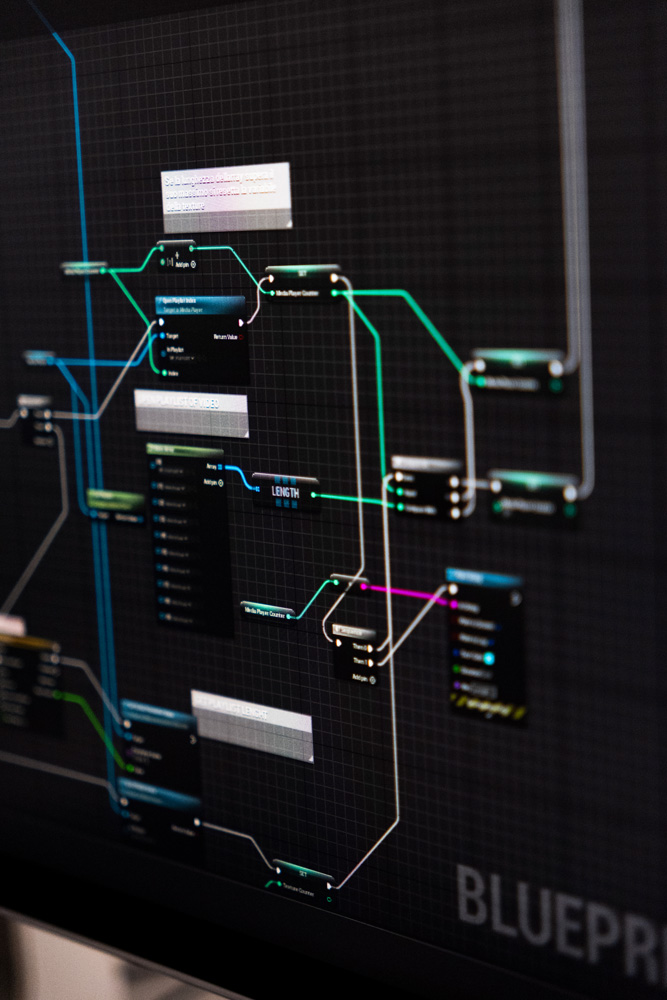
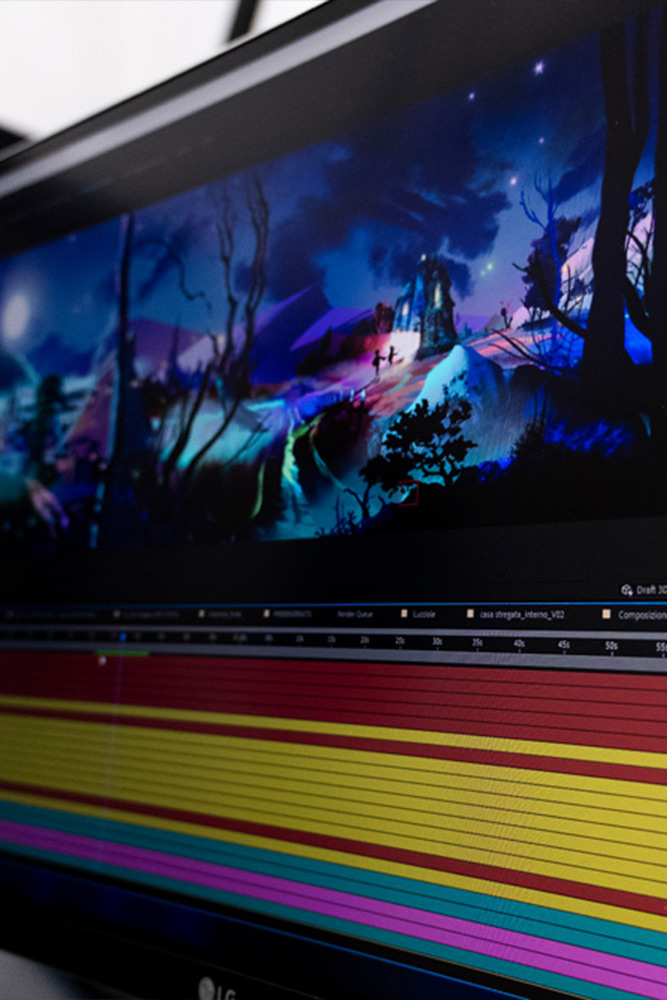
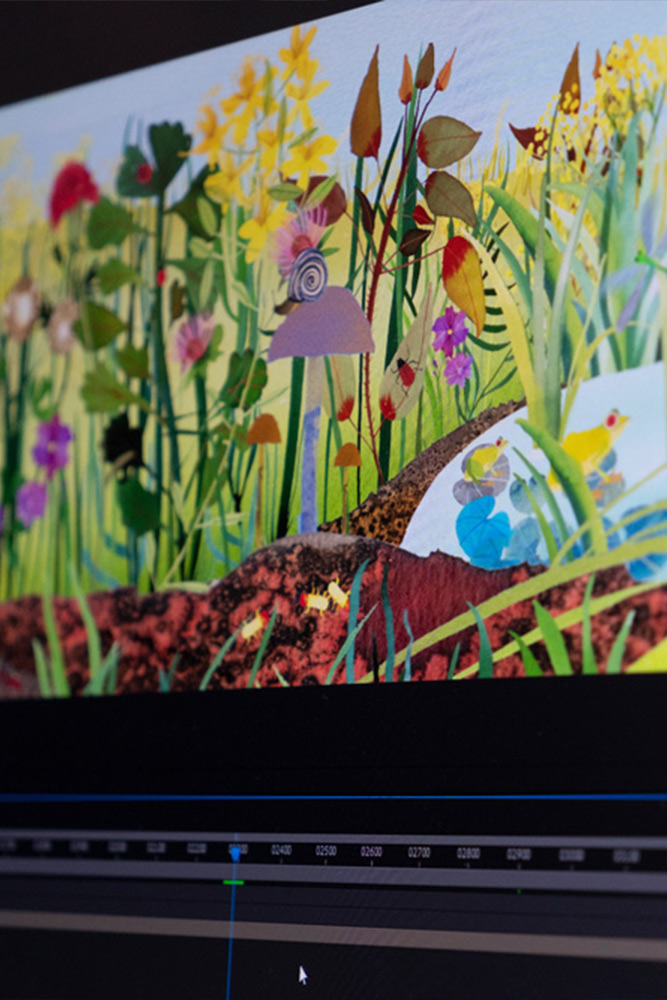
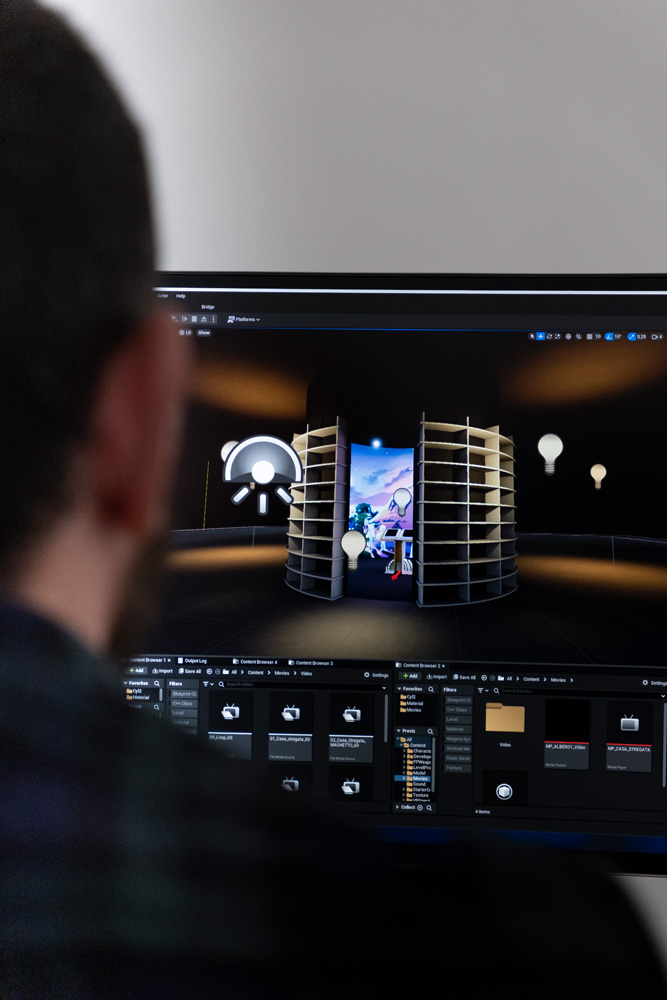





Privacy Policy – Cookie Policy






